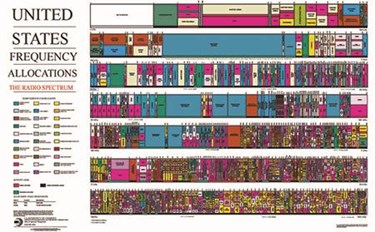DARPA Launches Artificial Intelligence Program To Monitor Radio Signals
By Jof Enriquez,
Follow me on Twitter @jofenriq

The Defense Advanced Research Projects Agency (DARPA) is launching a major program that will use artificial intelligence – specifically, machine learning techniques – to monitor signals in the increasingly crowded radio frequency spectrum.
The RF Machine Learning Systems (RFMLS) program is soliciting proposals until Oct. 10 from developers who will apply "modern data-driven Machine Learning to the RF Spectrum domain as well as to develop practical applications in emerging spectrum problems which demand vastly improved discrimination performance over today's hand-engineered RF systems."
DARPA says that rigid spectrum management currently in practice will not be enough to accommodate exploding wireless data demand. The agency believes artificial intelligence and machine learning technologies will be able to help solve the spectrum crunch by helping dynamically assign spectrum frequencies on demand. To that end, it has launched the Spectrum Collaboration Challenge to support innovators.
The new RFMLS program complements that contest in DARPA's vision of spectrum sharing through the help of machine learning, which uses sophisticated algorithms to collect and analyze huge amounts of RF data, and then trains itself to predict or act based on the information – a "situational awareness" – rather than following a preset path of instructions to carry out a task.
“What I am imagining is the ability of an RF Machine Learning system to see and understand the composition of the radio frequency spectrum – the kinds of signals occupying it, differentiating those that are ‘important’ from the background, and identifying those that don’t follow the rules,” said RFMLS program manager Paul Tilghman of DARPA’s Microsystems Technology Office.
Ultimately, the goal is to build RFML systems with a rich training set of RF data that can identify a wide range of both known and previously unseen RF waveforms, and with the capacity to distinguish between different signals produced by proliferating Internet of Things (IoT) devices, including signals used to hack them.
DARPA identifies four features of RFML systems that should be met:
- Feature Learning: the ability to identify and characterize signals in civilian and military settings.
- Attention and Saliency: developing salience detection, or the ability to identify and recognize important visual and auditory stimuli, including the detection of the presence of a communications signal in a frequency band usually devoted to radar signals.
- Autonomous RF Sensor Configuration: capability to automatically tune to signals that are most effective at accomplishing a task.
- Waveform Synthesis: the ability to digitally synthesize virtually any possible waveform, or create new ones tailored to specific RF devices
DARPA will hold a Proposer's Day on Aug. 31 to discuss the RFMLS program, which has three technical areas covering the development of algorithms for RF forensics and situational awareness, as well as an RF system integrator, according to ExecutiveGov.
Awards of $4 million annually for Technical Areas 1 and 2, and up to $1.5 million annually for Technical Area 3, await successful participants.
“If we get this right, we will have RF systems with the ability to discern and characterize signals in the ever-more-crowded spectrum. And that will give emerging automated systems, and the military commanders that rely on them, much needed information to understand the landscape of the wireless domain,” said Tilghman. “I hope our new RFMLS program will forge the technical foundations for a new domain and community of AI research.”
